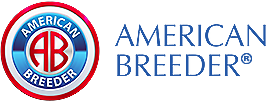RESOURCE LIBRARY
What Role Does the Dog’s Handler Play in Its Success, and How Can I Improve My Own Handling Skills?
Mastering Dog Handling: Your Key Role in Show Success and How to Improve Your Skills
The success of a dog in a show competition depends largely on its handler. A skilled handler not only knows how to present the dog's strengths but also manages to mask its weaknesses with precision and confidence. Improving your handling skills involves building a strong rapport with your dog, mastering show ring techniques, and staying calm under pressure. Whether you're an experienced handler or just starting, honing these skills can significantly boost your dog's performance.
The Handler's Influence: How You Can Make or Break Your Dog's Success
When people watch dog shows, they often focus on the dog's appearance and behavior, but the handler's influence is just as important. The handler is responsible for guiding the dog through every aspect of the competition, ensuring it shines in front of the judges. Simply put, a skilled handler can turn an average dog into a showstopper, while poor handling might cause a winning dog to falter.
What Does a Dog Handler Really Do?
Handling a dog in a show isn't just about leading it around the ring. It's about working with your dog in harmony, creating an invisible bond that showcases the dog's best traits. A good handler knows how to maintain control without being overbearing, showing off the dog's natural gait, posture, and temperament.
Think of yourself as the coach, guiding your team (the dog) to victory by playing to its strengths and minimizing its weaknesses.
Communication Is Key: The Subtle Art of Speaking Without Words
One of the most fascinating aspects of handling is how much communication happens without a single word being spoken. A slight tug on the leash, a small shift in your body, or even the way you look at your dog can all serve as cues during a competition.
Building a Strong Rapport
The most successful handlers have built an unspoken bond with their dogs. They know how their dog thinks, what motivates them, and how to bring out their best qualities. This kind of trust can only come with time, patience, and practice. Just like in any great partnership, the handler and dog need to understand each other on a deep level to excel in the ring.
If you're wondering whether you've built this kind of connection with your dog, ask yourself: Do you know how your dog will react before they even make a move? If so, you're well on your way to mastering dog handling.
Perfecting the Dance: Techniques to Improve Your Handling Skills
Being a great handler is part science, part art. It's not just about following the rules—it's about learning the dance. You and your dog are a team, and the more polished your techniques, the better you'll perform together in the ring.
Understanding Ring Etiquette and Procedures
There are certain rules and etiquette that every handler must follow in a dog show. This includes how you present your dog to the judge, how you move around the ring, and even how you handle your dog's leash. Judges are constantly watching not only the dog but also how you handle it.
Make sure to study the official guidelines for your specific competition, as ring procedures can vary. Additionally, practice stacking (properly positioning your dog) to emphasize your dog's strengths. For instance, stacking helps create the perfect silhouette for a dog, allowing its natural conformation to shine through.
Mastering Movement
Movement is one of the most critical aspects of a dog show. Judges look for the dog's natural gait, and your job as the handler is to present this as fluidly as possible. You'll want to practice at different speeds, making sure your dog remains confident and poised while you guide them through turns and straightaways. A smooth, synchronized movement between you and your dog can leave a lasting impression on the judges.
Imagine handling like a ballroom dance—where every step, turn, and pause is part of a well-rehearsed performance.
The Mental Game: Staying Cool Under Pressure
Dog shows can be nerve-wracking, not just for your dog but for you as well. One of the greatest challenges handlers face is maintaining composure under the watchful eyes of judges, fellow competitors, and spectators.
Your Emotions Influence Your Dog
Dogs are masters at reading human emotions. If you're feeling anxious or stressed, it's likely your dog will pick up on it and reflect those emotions in their performance. The best handlers know how to remain calm and collected, no matter the circumstances. Practice deep breathing, stay focused, and remember—if you're calm, your dog will be too.
Physical Fitness for Handlers: Yes, It Matters!
Handling isn't just a mental game; it's also physically demanding. In some dog shows, handlers are required to run or jog with their dogs to display the dog's gait properly. Keeping yourself fit will ensure that you can move effortlessly with your dog, even during long competitions.
Stay Active and Agile
Whether you're running with a sleek Greyhound or keeping up with a spry Sheltie, being physically prepared will allow you to handle your dog with grace. Include activities like jogging, agility training, and even yoga in your routine to stay in top form.
Should You Consider a Professional Handler?
If you're new to the show scene, the idea of hiring a professional dog handler might cross your mind. And there's nothing wrong with that. Professional handlers bring years of experience and can present your dog in the best possible light. However, with dedication, there's no reason why you can't master these skills yourself.
Learning from the Pros
If you choose to handle your own dog, it's a great idea to watch professionals at work. Attend dog shows, observe their techniques, and don't hesitate to ask questions. Many professionals offer workshops or training programs that can help you hone your skills.
Learning from Success: Real-World Case Studies of Top Handlers
Take inspiration from some of the top handlers in the dog show world. Professionals like Erin Bradshaw have earned countless awards by refining their handling techniques and understanding the psychology of both dogs and judges. What sets them apart is their dedication to practice and their ability to adapt to different dog personalities and temperaments.
Case Study: Winning Through Trust
Erin Bradshaw's success story emphasizes the importance of trust between handler and dog. When her young Labrador Retriever faced stage fright during its first major competition, Bradshaw focused on calming her dog by maintaining steady eye contact and using subtle body cues. This unspoken communication allowed the dog to regain its composure and go on to win the show.
Overcoming Common Challenges in Dog Handling
Handling a dog in a show is rarely without its challenges. From overly excited dogs to unpredictable ring environments, there's always a new obstacle to overcome. The key is knowing how to handle these hiccups without losing control or letting it affect your dog's performance.
Dealing with Distractions
Has your dog ever been distracted by another dog, the judge, or even a loud noise? These distractions can throw off your dog's concentration in the ring. Training with distractions ahead of time can help. Start with small distractions and gradually build up to simulate a busy, noisy show environment. Always have treats or toys handy to quickly regain your dog's attention.
Handling Larger Breeds
If you handle a large breed dog, maintaining control is essential. Large dogs can be powerful, and an excited large dog might overpower you if you aren't prepared. Use a sturdy leash, and practice working on commands like "heel" and "stay" to ensure your dog knows you're in charge.
Best Practices to Excel in the Show Ring
There's no secret formula for success in dog shows, but following best practices can greatly improve your chances of winning.
Consistency and Routine
Dogs thrive on consistency. By practicing your show routine regularly, your dog will become familiar with what's expected of them in the ring. Repetition creates confidence, both for you and your dog, which is critical for success.
Focus on Your Dog's Strengths
Every dog has strengths and weaknesses, just like every handler does. Learn to emphasize your dog's strongest traits and minimize their weaknesses. For example, if your dog has a perfect stack but struggles with gait, spend more time rehearsing their movement.
Resources for Aspiring Handlers: Learn and Grow
There are numerous resources available for handlers looking to improve their skills. From books to online courses, there's no shortage of learning material.
Recommended Reading and Courses
Books like "The Winning Edge: Show Handling and Grooming for Success" provide invaluable insights into the world of competitive dog handling. Additionally, organizations like the AKC offer online courses and workshops to help handlers of all levels refine their techniques.
FAQs: Your Dog Handling Questions Answered
- Can I handle my own dog in a show? Yes, many dog owners handle their own dogs with great success. It takes practice, but it's incredibly rewarding.
- How often should I practice with my dog? Ideally, practice handling a few times a week, gradually increasing the frequency leading up to the show.
- What should I wear when handling my dog? Your attire should be professional yet comfortable. Make sure your outfit doesn't distract from your dog or hinder your movements.
The Future of Dog Handling: What's on the Horizon?
Dog handling is evolving with new trends and technologies, such as virtual dog show competitions and remote training tools. These innovations are making it easier for handlers to practice and compete from virtually anywhere.
Final Thoughts: You Hold the Leash to Success
Handling a dog in a show is about much more than guiding them around a ring. It's about the connection you build, the practice you invest in, and the confidence you exude. Whether you're a first-timer or a seasoned pro, mastering the art of handling is a rewarding journey. And remember, the leash is always in your hands!
Did You Enjoy this Article? Share it and Help Us Spread the Word!
If you found this article helpful, we'd appreciate it if you could share it with your friends or link to it from your website, blog, or group! You can also use the convenient social share tabs on the left side of the screen to instantly share this page to your social media feed. For more ways to support and promote the American Breeder Community, visit our Share & Promote Together page for social media posts and memes you can copy and share. Your support means the world to us!
Disclaimer: The information provided in this article is for general informational purposes only and does not constitute legal, medical, financial, or professional advice. While we strive for accuracy, we make no representations or warranties regarding the completeness, accuracy, reliability, or suitability of the information. Please consult with a professional before making decisions based on the content provided. American Breeder Inc. assumes no responsibility for any errors or omissions or for the results obtained from the use of this information.
HOW TO USE AMERICAN BREEDER




Comments